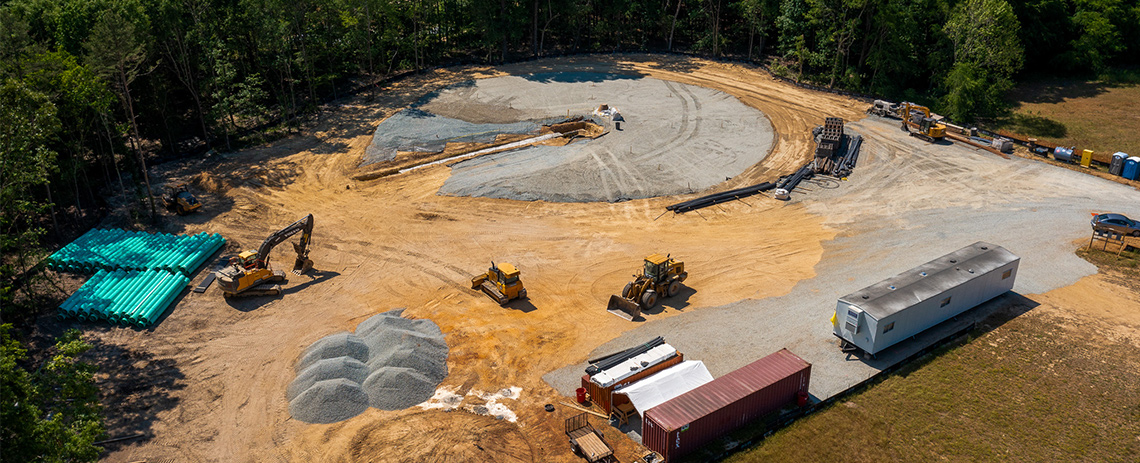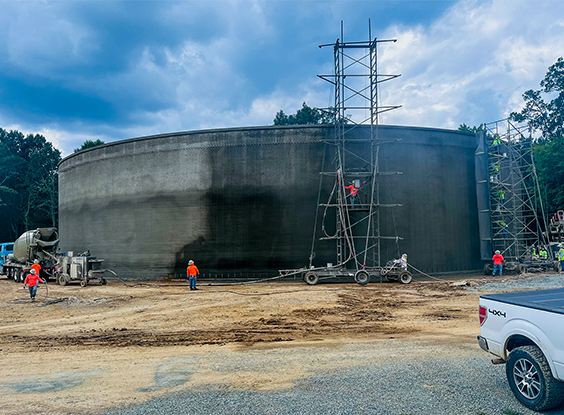Poplin Road Pipeline and Pump Station
Location
Indian Trail, North CarolinaValue
$14.8MDelivery Method
- Progressive Design-Build
Client Type
MunicipalProject Type
Pump Station
The Lower Crooked Creek Service Area in Union County (UCNC) continues to develop, requiring interim improvements to extend the Poplin Road Pump Station’s functional life until additional treatment capacity becomes available in the Lower Crooked Creek Water Reclamation Facility (WRF) basin. To alleviate downstream sewer strain during high flow periods and reduce the risk of sanitary sewer overflows, UCNC decided to construct flow equalization facilities and transfer pumping. UCNC selected Garney to build an overflow pump station and storage tank to enhance the system’s capacity.
Garney elevated the Poplin Road pump station above the flood zone, preparing the site for the 4 million-gallon (MG) storage tank that holds excess water until storm conditions ease. The new 10 million-gallons-per-day (MGD) overflow pump station, equipped with two 250-horsepower (hp) submersible pumps, moves sewage through a network of sanitary gravity and force main pipelines to the Twelve Mile Creek WRF for treatment.
During project design, UCNC and the design-build team collaborated to enable the Poplin Road Pump Station to operate automatically during storm events. The automatic controls and programming would shut down the pump station during high-flow conditions downstream of the pump station, diverting flow into the 4 MG storage tank. Once the system’s level sensor detected reduced flows, the Poplin Road Pump Station would automatically restart, gradually reintroducing stored flows from the 4 MG ground storage tank to the pump station and then to Twelve Mile Creek WRF. During construction, Garney monitored a level sensor and control panel in a downstream manhole. When the sensor detected high flow levels, the team alerted UCNC to manually shut down the pump station.
The project required crossing an active creek while maintaining its flow. To achieve this, the team completed the crossing in two sections. First, crews used sandbags to divert water from the work area, allowing them to install trench boxes and lay the first section of a 24” force main, 18” gravity return, and pipe encasement. After completing this section, they removed the trench box near the embankment, backfilled the pipe encasement, and removed sandbags from one side of the creek. For the next section, Garney placed a new trench box and sandbags against those already in the center of the creek, ensuring a stable work area and minimizing disruptions. The process was then repeated on the other side.
The team faced supply chain delays, particularly with the delivery of electrical gear. Garney worked closely with its electrician to fast-track work and minimize the impact of these delays while keeping UCNC informed throughout the process. Despite supply chain challenges, the project was completed on time.







